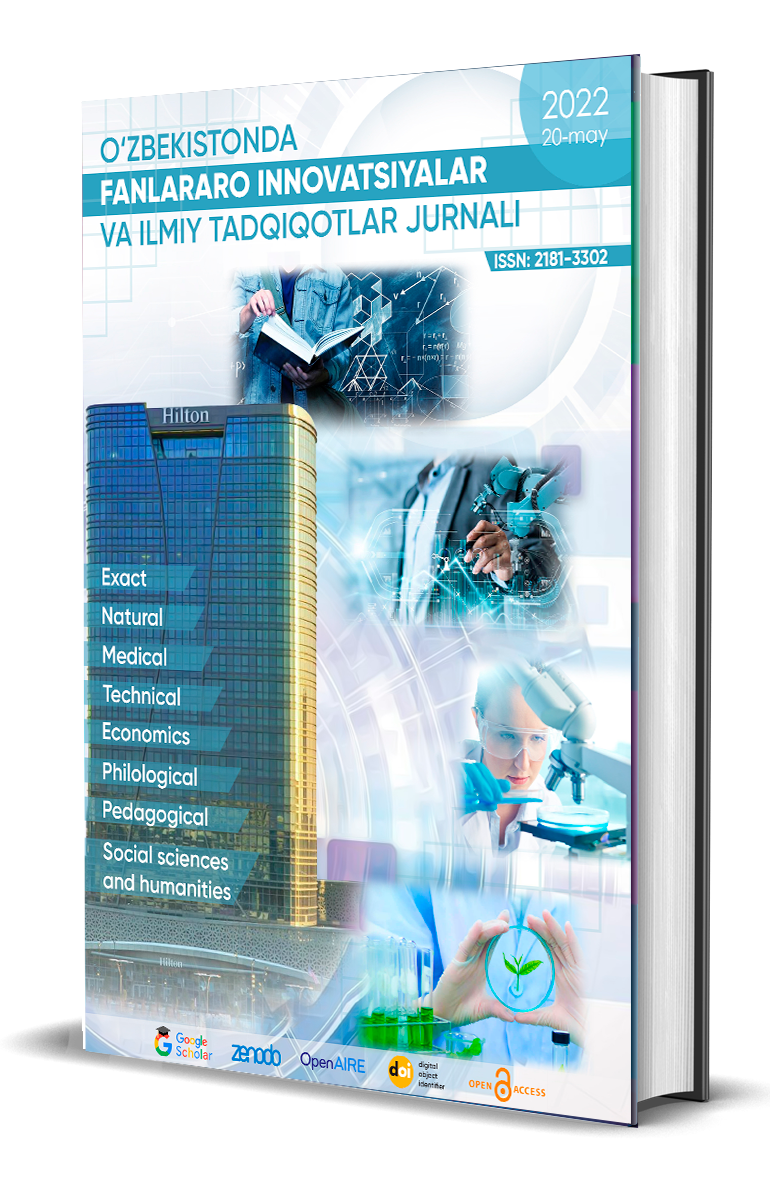CHICORIUM INTYBUS L. O‘SIMLIGI TARKIBIDAGI FLAVANOIDLAR VA ULARNING TIBBIYOTDA QO‘LLANILISHI.
Keywords:
Chicorium intybus, apigenin, kamferol, kversetin, flavonoidlar, dorivor o‘simlik, antioksidant, yallig‘lanishga qarshi, tibbiyotda qo‘llanish, yurak-qon tomir kasalliklari.Abstract
Ushbu maqolada sachratqi oʻsimligi haqidagi maʻlumotlar keltirilgan. Xususan: O‘simlik tarkibidagi flavanoidlar, ularning olinish, moddalarning tuzilishi, PMR spektrlari, zamonaviy tibbiyotdagi oʻrni haqida. Chicorium intybus — keng tarqalgan dorivor o‘simlik bo‘lib, uning tarkibida flavonoidlar, ya’ni tabiiy polifenol birikmalari mavjud. Ushbu flavonoidlar o‘simlikning antioksidant, yallig‘lanishga qarshi, antimikrobial va immunomodulyator xususiyatlarini ta’minlaydi. Tibbiyotda Chicorium intybusning flavonoidlari xolesterin darajasini pasaytirish, jigar va buyrak funksiyalarini yaxshilash, shuningdek, yurak-qon tomir kasalliklari va surunkali yallig‘lanish jarayonlarini oldini olishda keng qo‘llaniladi. Mazkur o‘simlikning flavonoidli ekstraktlari tabiiy dori vositasi sifatida yangi tibbiy preparatlar ishlab chiqishda istiqbolli hisoblanadi.
References
1. Saggu S., Sakeran M.I., Zidan N., Tousson E., Mohan A., Rehman H. Ameliorating effect of chicory (Chichorium intybus L.) fruit extract against 4- tertoctylphenol induced liver injury and oxidative stress in male rats // Food and Chemical Toxicology. 2014. Vol. 72. Pp. 138-146. DOI: 10.1016/j.fct.2014.06.029.
2. Jamshidzadeh A., Khoshnood M.J., Dehghani Z., Niknahad H. Hepatoprotective Activity of Cichorium intybus L. Leaves Extract Against Carbon Tetrachloride Induced Toxicity // Iranian Journal of Pharmaceutical Research. 2006. Vol. 1. Pp. 4146. DOI: 10.22037/IJPR.2010.651.
3. Mares D., Romagnoli C., Tosi B., Andreotti E., Chillemi G., Poli F. Chicory extracts from Cichorium intybus L. as potential antifungals // Mycopathologia. 2005. Vol. 160(1). Pp. 85-91. DOI: 10.1007/s11046-004-6635-2.
4. Abdel-Rahim E.A., Rashed M.M., El-Hawary Z.M., Abdelkader M.M., Kassem S.S., Mohamed R.S. Anti-diabetic Effect of Cichorium intybus Leaves and Plantago ovate Seeds in High Fat Diet-streptozotocin Induced Diabetic Rats
// Journal of Food and Nutrition Research. 2016. Vol. 4. N5. Pp. 276-281. DOI: 10.12691/jfnr-4-5-2.
5. Heinrich, M., Barnes, J., Gibbons, S., & Williamson, E. (2012). Fundamentals of Pharmacognosy and Phytotherapy. Elsevier Health Sciences.
6. Harborne, J.B. (1998). Phytochemical Methods: A Guide to Modern Techniques of Plant Analysis. Springer.
7. Kumar, S., Pandey, A.K. (2013). Chemistry and biological activities of flavonoids: An overview. The Scientific World Journal.
8. Patel, S., et al. (2017). Pharmacological activities of Chicorium intybus: A review. International Journal of Pharmaceutical Sciences and Research.
9. Wang, L., et al. (2014). Antioxidant and anti-inflammatory effects of flavonoids from Chicorium intybus L. in vitro and in vivo. Journal of Ethnopharmacology.
10. Sharma, V., et al. (2015). Medicinal properties and phytochemical constituents of Chicorium intybus: A comprehensive review. Phytotherapy Research.
11. Agrawal, P.K. (2011). NMR Spectroscopy in Pharmaceutical Analysis. Elsevier.
12. Yücesan, B., et al. (2018). Role of flavonoids in cardiovascular health. Molecules.





